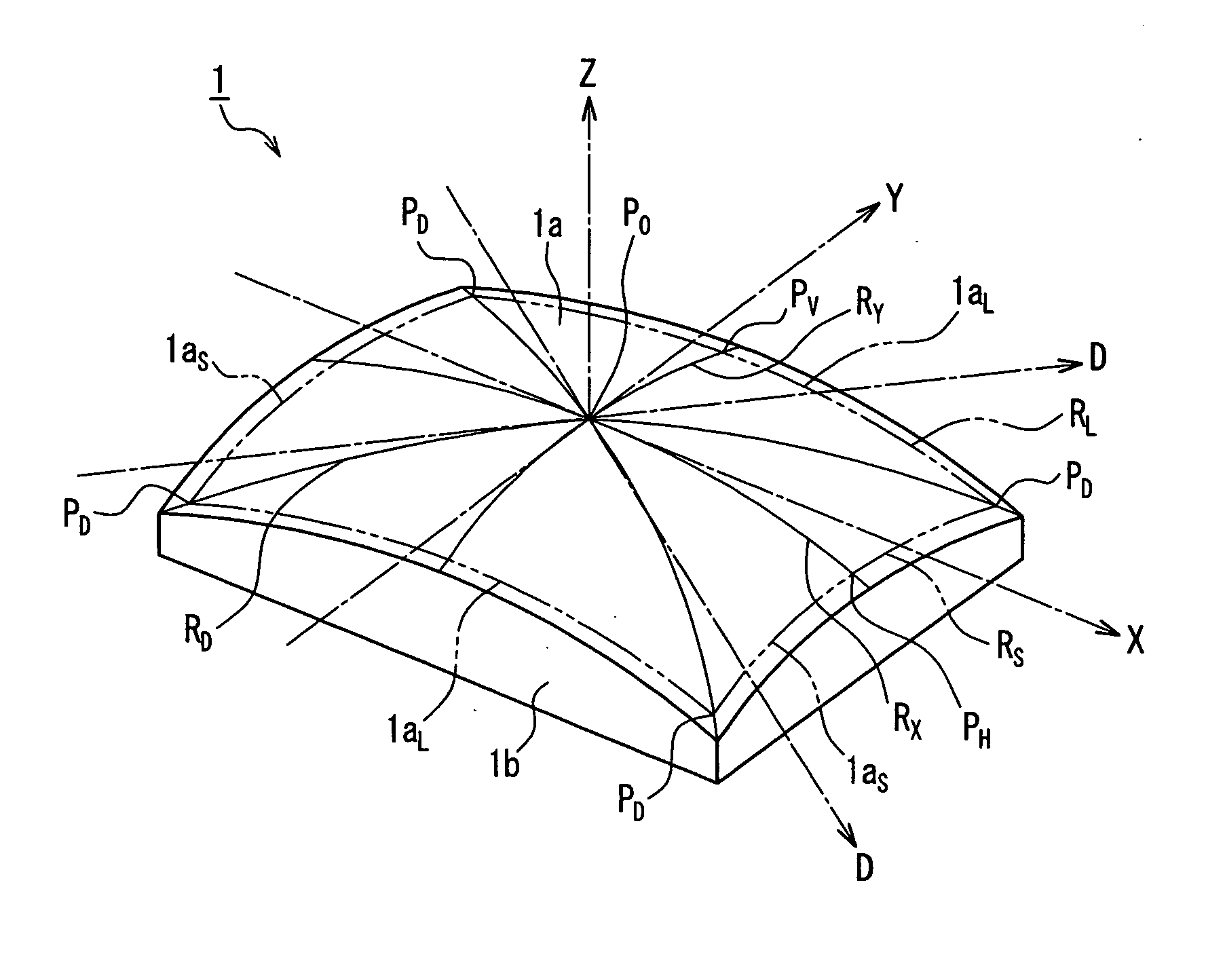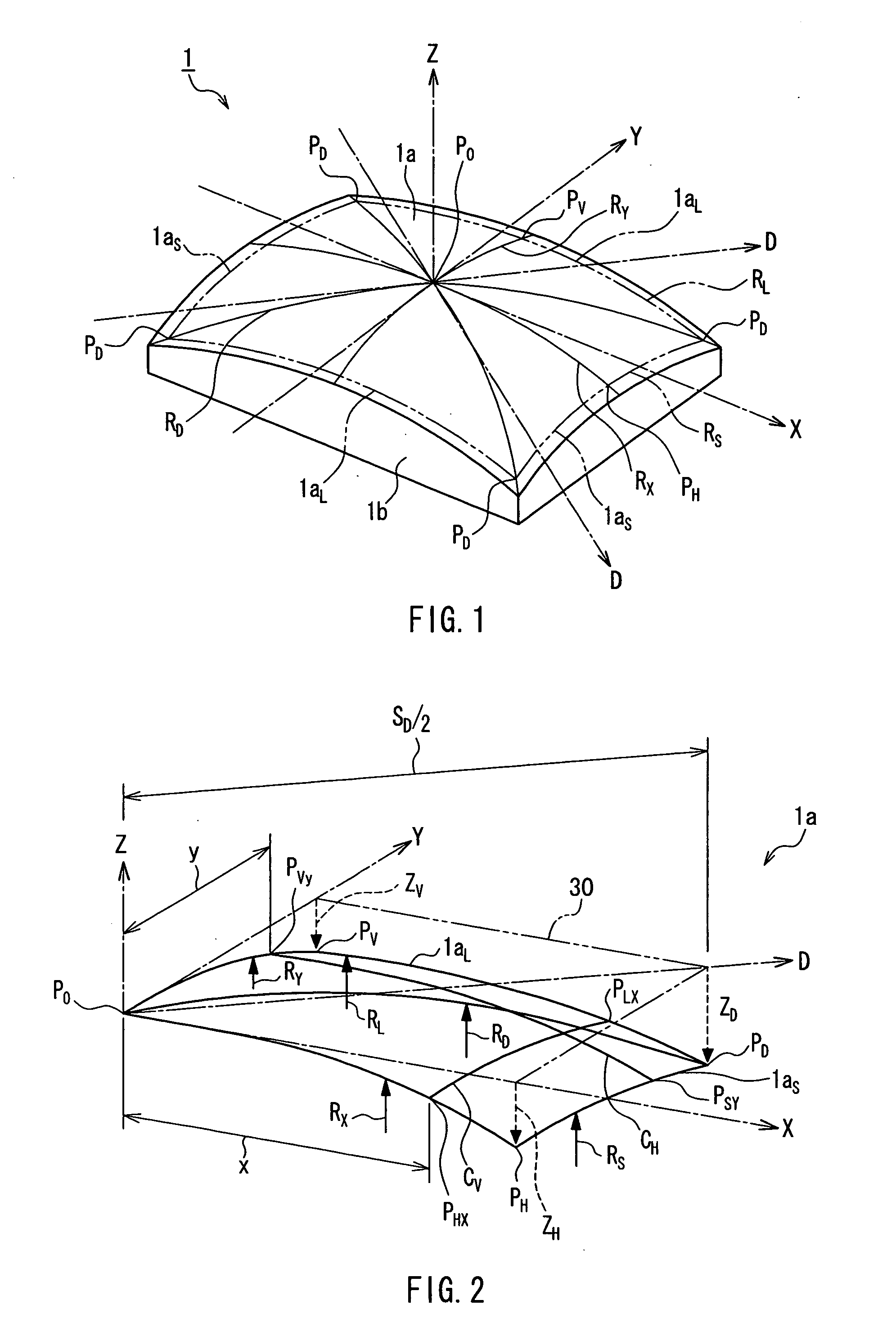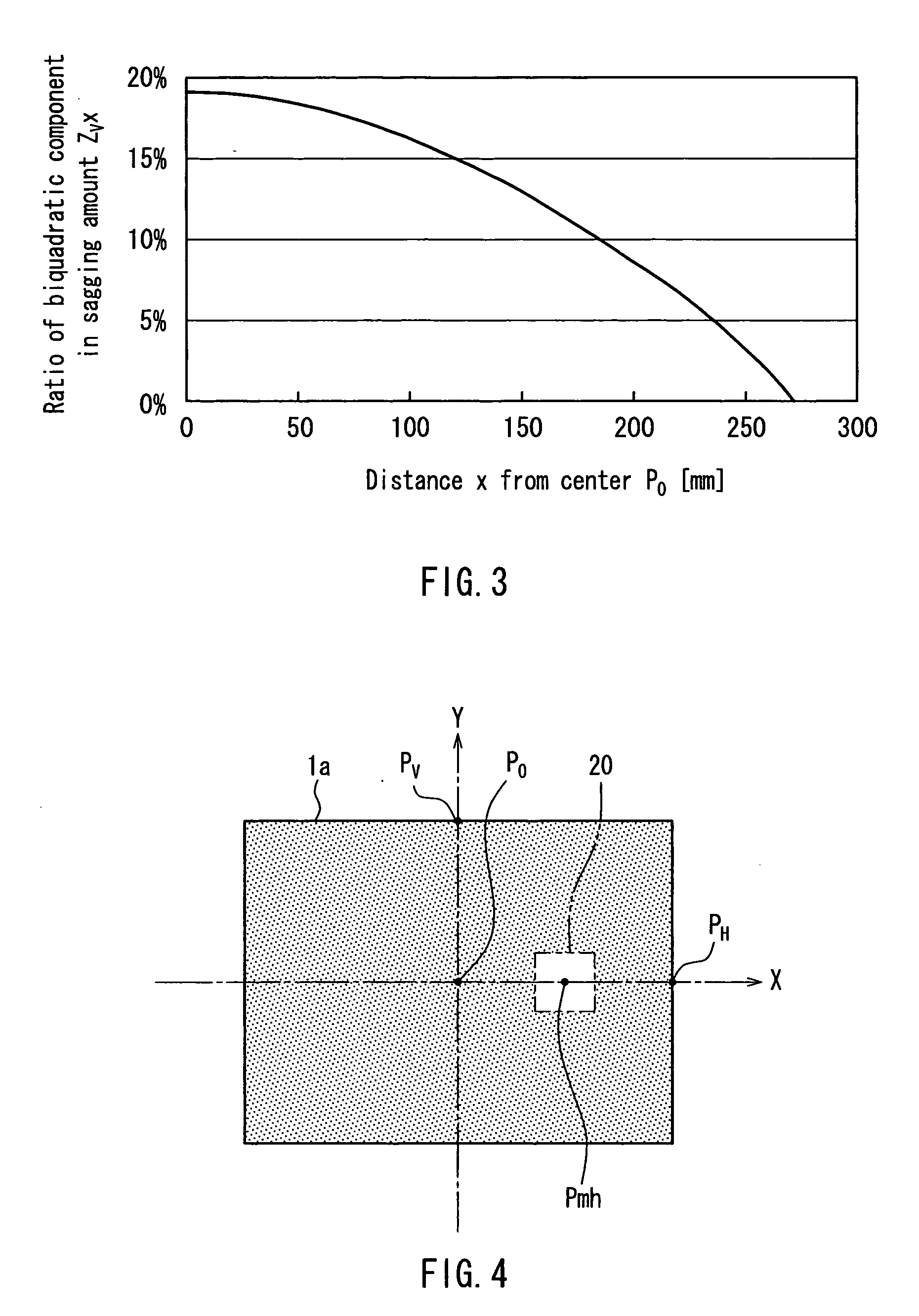Therefore, the displacement amount of the landing positions of the
electron beam also increases, thus deteriorating the
color purity considerably.
Such an
alloy has a coefficient of
thermal expansion of 1 to 2×10−6 at 0° C. to 100° C., which is effective for suppressing doming; however, it entails high cost.
Furthermore, the iron-
nickel alloy has a large elasticity after annealing, so that it is difficult to form a curved surface by press forming from a
thin metal sheet that has been provided with an extremely large number of the
electron beam passage apertures and to obtain a desired curved surface.
Therefore, it particularly is difficult to process the
shadow mask 4 including the perforated region 4b with a large
radius of curvature by press-forming this material.
In the case where press forming is insufficient and undesired stress remains in the shadow
mask 4 after press forming, this
residual stress changes the shape of the shadow
mask 4 during the thermal process of the color picture tube, which leads to the displacement of the landing positions of the
electron beams, resulting in significant deterioration in the
color purity.
However, the coefficient of
thermal expansion of such a material mainly containing high-purity iron is as high as about 12×10−6 at 0° C. to 100° C., which is disadvantageous for doming.
Particularly, in the case of applying this material to a color picture tube having the panel 1 whose useful portion 1a has the substantially flat outer surface, there arises a serious problem such as the considerable deterioration in color purity.
However, the
radius of curvature of the inner surface is not sufficient to suppress effectively the above-described various problems regarding the shadow
mask.
Thus, there has been a significant problem especially in the case of using a shadow mask formed of an inexpensive iron material.
However, the
radius of curvature of its inner surface is not small enough to suppress the above-described various problems effectively.
In particular, a very large thermal stress is generated in the thick portion of the panel 1, causing a problem that the envelope 9 is broken.
As a result, there also has been a problem that the brightness of the image becomes nonuniform such that the central portion of a screen becomes bright and the
peripheral portion thereof becomes dark.
Therefore, it is difficult to make the difference in thickness between the central portion and the
peripheral portion of the useful portion 1a of the panel 1 larger than that in the conventional case, and there has been a limitation on the reduction of the
radius of curvature of the inner surface of the panel 1 whose useful portion 1a has a flat outer surface.
Then, as described above, when the iron material that is inexpensive and has excellent
formability is used as the material for the shadow mask 4, its large coefficient of
thermal expansion causes a still larger displacement amount of the electron beam landing positions due to the thermal expansion of the shadow mask 4, thus deteriorating the color purity further.
However, such a color picture tube is not compatible with the demand for a flatter outer surface of the useful portion 1a of the panel 1.
In other words, it is not possible to ensure compatibility of the front cabinet of the TV set with the conventional flat tube.
However, when the outer surface of the useful portion 1a of the panel 1 is flattened, the effect of the reinforcing band 12 of deforming the useful portion 1a of the panel 1 such that its central portion bulges outward cannot be obtained easily, necessitating a reinforcing band generating a larger embracing force.
 Login to View More
Login to View More  Login to View More
Login to View More 


